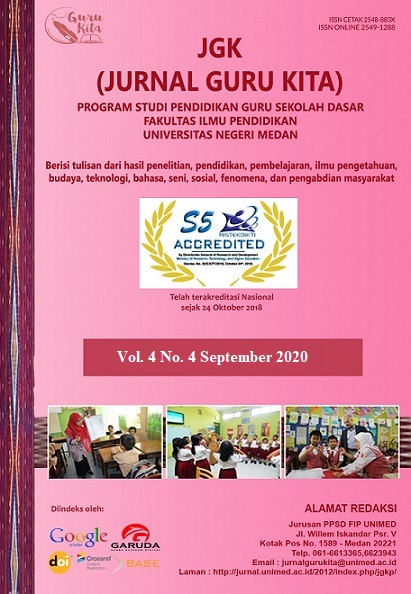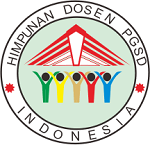PELATIHAN MEMBUAT TEMPAT PENSIL DAN PERNAK-PERNIK MENGGUNAKAN KAIN FLANEL DI YAYASAN DARUSSALAM DEPOK
DOI:
https://doi.org/10.24114/jgk.v6i2.31201Abstract
Tujuan asal PKM ini ialah agar annak-anak memamnaatkan saat luang untuk membentuk barang berasal kerajinan tangan, khususnya mengolah kain flanel sebagai tempat pensil serta pernak-pernik, atau kerajinan tangan lainnya yang mempunyai nilai jual. Metode yang dipergunakan merupakan observasi, wawancara, serta pelatihan. sesuai pembinaan yang sudah dilaksanakan diperoleh akibat sebagai berikut: 1) anak-anak mampu mengolah kain flanel sebagai tempat pensil serta perak-pernik dan kerajinan tangan lainnya menggunakan aneka macam ciptaan. 2) anak-anak telah bisa mempraktikan pembuatan tempat pensil serta pernak-pernik asal kain flanel. 3) Peserta bisa membuat pola yang menarik dalam pembuatan. 4) anak-anak mampu tahu langkah-langkah menggunakan baik. 5) Peserta bisa memanfaatkan saat luang menggunakan baik. 6) Peserta memberikan minat untuk membentuk kerajinan tangan.Downloads
Published
2022-03-20
How to Cite
Alpiani, A. (2022). PELATIHAN MEMBUAT TEMPAT PENSIL DAN PERNAK-PERNIK MENGGUNAKAN KAIN FLANEL DI YAYASAN DARUSSALAM DEPOK. JGK (Jurnal Guru Kita), 6(2), 42–47. https://doi.org/10.24114/jgk.v6i2.31201
Issue
Section
Articles
License
Authors published with the JGK (Jurnal Guru Kita) agree to the following terms:
- Authors retain copyright and grant the journal the right of first publication with the work simultaneously licensed under a Creative Commons Attribution License (CC BY-SA 4.0) that allows others to share the work with an acknowledgment of the work's authorship and initial publication in this journal.
- Authors are able to enter into separate, additional contractual arrangements for the non-exclusive distribution of the journal's published version of the work (e.g., post it to an institutional repository or publish it in a book), with an acknowledgment of its initial publication in this journal.
- Authors are permitted and encouraged to post their work online (e.g., in institutional repositories or on their website) prior to and during the submission process, as it can lead to productive exchanges, as well as earlier and greater citation of published work. (See The Effect of Open Access)













